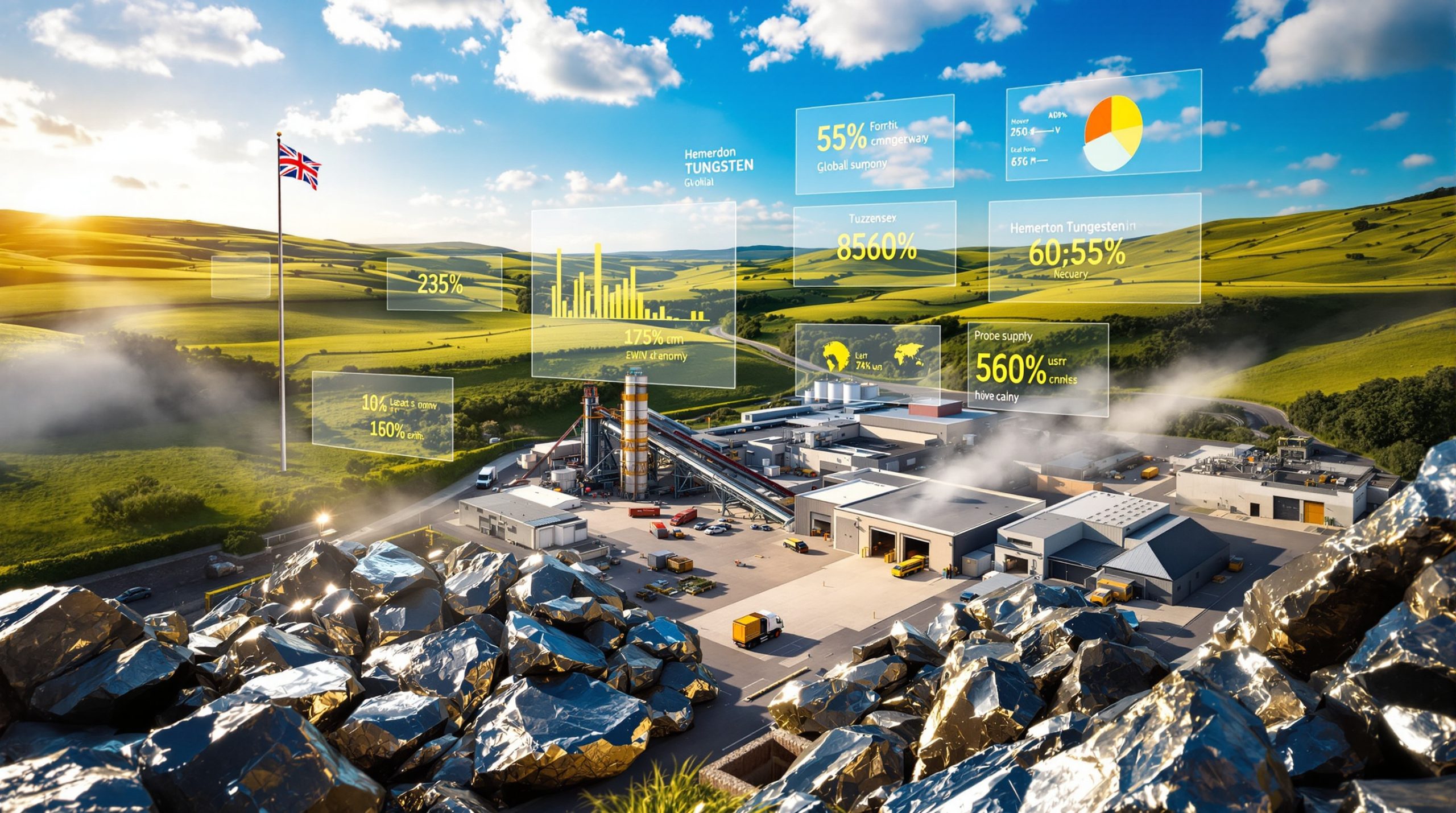What Factors Are Driving Copper Prices Lower?
The copper market is currently experiencing a notable downward shift in copper prices, driven by a complex interplay of geopolitical tensions, bearish market sentiment, and fundamental weaknesses. Recent trading data from July 15, 2025, shows the BC Copper 2508 contract closing at 69,250 yuan/mt, representing a 0.33% decline within a single trading session. This price movement falls within an intraday range of 68,920-69,330 yuan/mt, reflecting continued price volatility and testing of key support levels.
According to Shanghai Metal Market (SMM) analysis, the price center has shifted downward despite temporary intraday recoveries, indicating persistent selling pressure in the market. Technical indicators reveal a negative candlestick pattern forming alongside an increase in open interest by 191 lots to 4,501 lots—a clear signal of growing bearish sentiment among market participants.
Current Market Dynamics
Trading activity remains moderate with a volume of 3,852 lots, showing market engagement despite the price decline. The bearish price action is characterized by initial upward fluctuations followed by sustained downward pressure, a pattern consistent with markets concerned about future economic conditions.
The formation of negative candlestick patterns in recent trading sessions is particularly telling. When such patterns emerge alongside increasing open interest in a declining market, technical analysts interpret this as new short positions being established rather than simply liquidation of existing longs—suggesting traders are actively betting on further price declines.
Geopolitical Tensions and Trade Concerns
Perhaps the most significant external factor weighing on copper prices is the specter of new trade restrictions and sanctions related to the ongoing Russia-Ukraine conflict.
"If Russia fails to reach an agreement on the Russia-Ukraine conflict within 50 days, a 100% secondary tariff will be imposed on Russia, and secondary sanctions will be imposed on countries purchasing Russian oil," according to statements cited in SMM's copper commentary of July 15, 2025.
This geopolitical development has far-reaching implications beyond direct copper trade. While Russia accounts for approximately 3-4% of global copper production, the indirect effects of such sanctions could be more consequential. The threat has already triggered adjustments in global crude oil supply expectations, creating a ripple effect across commodity markets.
Industry analysts note that crude oil often functions as a "barometer" for broader commodity sentiment. The uncertainty surrounding potential sanctions has lowered market expectations for global economic recovery, disrupting sentiment across industrial metals including copper.
The risk extends beyond direct sanctions on Russia to secondary sanctions on countries purchasing Russian commodities—potentially fragmenting traditional trading partnerships and creating new inefficiencies in global supply chains. Furthermore, the trade war impact on copper adds a significant risk premium to industrial metals markets.
How Are Supply and Demand Fundamentals Affecting Copper?
The current downward price trajectory in copper markets reflects a fundamental imbalance between supply and demand conditions, though the picture is more nuanced than raw inventory figures might suggest.
Supply-Side Analysis
Recent inventory increases have captured market attention, but SMM analysis indicates these are primarily related to delivery timing and contract rollover effects rather than genuine increases in spot cargo circulation. This technical distinction is crucial for market participants: much of the reported inventory increase represents material already committed to delivery obligations rather than freely available supply.
These delivery-related movements effectively mask true market availability, creating a potential mispricing opportunity for traders who can distinguish between technical inventory shifts and fundamental supply changes. Market veterans recognize that end-of-contract positioning often creates temporary distortions that revert once delivery periods conclude.
Strategic positioning by market participants ahead of contract expirations further complicates the supply picture. Some traders deliberately move material into reportable warehouses to satisfy delivery obligations or influence short-term price dynamics, creating inventory data that may not accurately reflect underlying physical market conditions. The global copper supply forecast provides additional context for understanding these market dynamics.
Demand-Side Weakness
On the demand side, copper is facing significant headwinds from seasonal factors and cautious purchasing strategies. SMM reports that "downstream enterprises' purchase willingness remains weak" amid what they describe as an "off-season" period for industrial consumption.
This seasonal downturn has affected purchasing patterns across key copper-consuming sectors, with manufacturers displaying reduced willingness to build significant inventories. The predominance of just-in-time purchasing strategies has become increasingly evident, with buyers limiting exposure to price volatility by procuring only immediate requirements.
Industry sources indicate insufficient momentum for substantial restocking activities, with procurement largely limited to covering immediate production needs. This hand-to-mouth purchasing behavior creates a self-reinforcing cycle of price weakness, as limited buying interest fails to provide price support during periods of increased selling pressure.
The absence of speculative buying or strategic inventory building suggests market participants remain unconvinced that current price levels represent significant value, despite the recent declines. This cautious stance reflects broader uncertainties about global economic conditions and potential regulatory changes affecting industrial activity.
What's Happening with Price Spreads Between Copper Contracts?
Contract price differentials provide crucial insights into market expectations and physical delivery dynamics, offering traders valuable signals about near-term price direction.
Contract Price Differentials
Current market data reveals a noteworthy pricing relationship between the two main copper contracts traded in China. The SHFE copper contract closed at 78,090 yuan/mt, while the BC copper contract settled at 69,250 yuan/mt. When adjusted for tax considerations, the BC copper price equates to 78,253 yuan/mt, creating an inverted spread of -163 yuan/mt between the contracts.
This inverted spread (where the SHFE price is lower than the tax-adjusted BC price) represents a narrowing compared to previous trading sessions, suggesting evolving market expectations. The direction and magnitude of this spread change offer important clues about shifting supply-demand dynamics and trader positioning.
Traditionally, such spread relationships reflect relative supply tightness between different delivery periods or locations. An inverted spread typically suggests near-term supply constraints relative to forward periods, though other factors including tax considerations, delivery specifications, and market liquidity can influence the relationship.
Market Implications of Price Spreads
The narrowing of the inverted spread between SHFE and BC copper contracts has significant implications for market participants. As spreads tighten, arbitrage opportunities diminish, potentially reducing speculative trading volume between the contracts.
Contract preferences are shifting among market participants as these spread relationships evolve. Traders carefully evaluate delivery considerations and contract specifications when determining optimal positions, with spread dynamics influencing trading strategies across the copper complex.
These pricing inefficiencies potentially signal broader market sentiment changes, with spread dynamics often preceding outright price movements in either direction. Sophisticated traders monitor these relationships for early warning signs of changing market fundamentals or shifts in market positioning.
Industry analysts note that spread relationships frequently normalize ahead of delivery periods as market participants adjust positions to avoid physical delivery obligations. This technical rebalancing can create temporary price distortions that revert once the delivery period concludes.
How Are Industrial Developments Impacting the Copper Market?
Industry-specific developments along the copper supply chain provide crucial context for understanding both current market conditions and future price trajectories.
Mining and Production Updates
Recent corporate announcements highlight significant new investments in copper production capacity. Daoshi Technology has unveiled plans to invest up to $165 million in a copper cathode hydrometallurgy smelter project with a capacity of 30,000 tonnes per annum. This technology represents a more environmentally sustainable approach to copper production compared to traditional pyrometallurgical processing.
Meanwhile, Shengda Resources reports that Honglin Mining's Caiyuanzi Copper-Gold Mine is approaching its trial production phase, scheduled to commence between July and September 2025. This project represents part of the industry's diversification strategies, with resource companies increasingly focusing on copper alongside other non-ferrous metals to capitalize on electrification trends.
These developments reflect the industry's response to long-term demand expectations, despite current market weakness. Capital investment decisions typically reflect multi-year outlook considerations rather than short-term price movements, suggesting continued confidence in copper's structural demand trajectory.
The hydrometallurgical approach being implemented by Daoshi Technology is particularly notable, as it typically allows for processing of lower-grade ores that might be uneconomical through conventional methods. This technology could potentially unlock new resource categories, gradually shifting the industry's cost curve and production profile.
Downstream Industry Performance
Copper demand remains heavily influenced by sector-specific conditions across major consuming industries. The wire and cable sector, which typically accounts for over 40% of copper consumption, shows seasonal variations in purchasing patterns, with current activity reflecting the broader economic slowdown.
Construction industry procurement behavior similarly reflects prevailing macroeconomic conditions, with project timelines and funding availability directly impacting copper demand. Industry sources report cautious purchasing across construction segments, with buyers reluctant to build inventory ahead of potential price declines.
Electronics manufacturing consumption trends are particularly important for premium-grade copper demand. The sector's increasing material efficiency and miniaturization trends partially offset unit growth, creating a complex demand picture for high-purity cathode producers.
Infrastructure project schedules continue to influence long-term copper requirements, with government spending initiatives providing a demand floor despite private sector caution. The timing of project approvals and implementation remains a key variable for demand forecasting across multiple regional markets. The surging copper demand trends in certain sectors provide a counterbalance to current weakness.
What Technical Indicators Are Signaling for Copper Prices?
Technical analysis provides crucial insights for traders navigating copper's volatile price action, offering structured approaches to identifying potential support and resistance levels.
Price Action Analysis
Recent trading sessions have produced a series of negative candlestick patterns, with prices testing both support and resistance levels multiple times before establishing clearer directional momentum. The July 15th session saw an intraday high of 69,330 yuan/mt followed by gradual declines, creating a bearish engulfing pattern that technical analysts interpret as a continuation signal.
This price action coincides with specific volume characteristics that reinforce the bearish narrative. Trading volume reached 3,852 lots with increased concentration during price declines, suggesting stronger conviction among sellers than buyers at current levels.
Support and resistance levels are establishing new trading ranges as the market digests recent fundamental developments. Technical indicators suggest immediate support around 68,900 yuan/mt, with more significant support clustered near 68,500 yuan/mt based on previous consolidation patterns.
The failure of prices to maintain momentum above 69,300 yuan/mt suggests this level has become a significant near-term resistance zone. Technical analysts note that repeated tests of resistance levels that fail to produce breakouts often precede accelerated downside moves once support levels are breached.
Trading Patterns and Volume Analysis
Open interest increased by 191 lots during the recent session, indicating the establishment of new positions rather than simply the liquidation of existing ones. This pattern typically suggests growing conviction about future price direction, with the combination of falling prices and rising open interest generally interpreted as new short positioning.
Volume concentration patterns reveal important insights about trader sentiment. Periods of high-volume selling followed by lower-volume rebounds typically indicate dominant bearish sentiment, with temporary recoveries representing position adjustments rather than fundamental shifts in market view.
Price movements relative to broader commodity indices show copper underperforming the general commodity complex, suggesting copper-specific concerns beyond general market sentiment. This relative weakness typically requires specific fundamental catalysts to reverse, with technical rebounds limited without supporting fundamental developments.
As prices search for equilibrium, technical support levels are being tested with increasing frequency. The market's response to these tests provides valuable information about underlying buying interest, with the strength and duration of rebounds from support levels indicating the conviction level of value-based buyers.
What's the Outlook for Copper Prices in the Coming Months?
Forecasting copper's price trajectory requires integrating fundamental, technical, and macroeconomic considerations into a coherent market narrative.
Short-Term Price Projections
The immediate outlook for copper prices suggests continued downward pressure due to weak fundamental support. With seasonal factors limiting industrial demand and geopolitical uncertainties weighing on sentiment, the path of least resistance appears to be lower in the near term.
Technical indicators reinforce this view, suggesting further consolidation before directional clarity emerges. The failure of recent price rebounds to generate sustainable momentum above resistance levels indicates limited conviction among buyers at current price points.
Seasonal factors are expected to limit significant price recoveries in the immediate term, with historical patterns suggesting subdued trading activity during the current period. This seasonal weakness typically persists until early autumn when industrial activity traditionally accelerates following summer slowdowns.
Geopolitical developments require close monitoring for sudden shifts that could alter the market narrative. The evolution of potential sanctions against Russia and their implementation timeline represent a significant wild card for commodity markets broadly, with implementation details potentially creating volatility across the industrial metals complex. The global trade tariff impact remains a critical factor to monitor in this context.
Long-Term Market Considerations
Looking beyond current weakness, several structural factors support a more constructive long-term outlook for copper. Industrial demand patterns will likely improve as seasonal factors dissipate, potentially creating more balanced market conditions as the year progresses.
Supply chain adjustments in response to geopolitical tensions may create regional premiums and discounts as trading patterns evolve. Market participants are beginning to develop contingency sourcing strategies to mitigate potential disruptions from sanctions implementation.
Infrastructure development initiatives across major economies continue to provide underlying support for copper demand, though implementation timelines may shift based on economic conditions and policy priorities. These programs typically represent multi-year commitments that support baseline demand projections.
Perhaps most significantly, the green energy transition maintains structural support for copper demand across multiple application categories. Electrification trends in transportation, renewable energy generation, and grid infrastructure all require substantial copper inputs, creating a supportive long-term demand narrative despite near-term fluctuations.
Industry analysts note that copper's demand growth from energy transition applications could accelerate from 2026 onward as manufacturing capacity for electric vehicles and renewable energy components continues expanding globally. This structural growth story remains intact despite current cyclical weaknesses. Recent copper price prediction insights provide additional perspective on these longer-term trends.
FAQ: Copper Market Trends and Price Movements
Why are copper prices showing weakness despite supply constraints?
Copper prices are experiencing downward pressure primarily due to seasonal demand weakness, with downstream industries showing limited purchasing enthusiasm. The SMM analysis highlights that "downstream enterprises' purchase willingness remains weak" amid the current off-season period. This demand weakness overwhelms any supportive factors from potential supply constraints.
Additionally, geopolitical tensions and potential trade restrictions have created uncertainty in the market. The prospect of 100% secondary tariffs on Russian exports if the Russia-Ukraine conflict remains unresolved has disrupted market sentiment across the commodity complex. This uncertainty has prompted cautious positioning among traders despite potentially supportive fundamentals.
The combination of seasonal demand lulls and heightened geopolitical risk creates a particularly challenging environment for copper prices, with technical selling further accelerating the downward momentum once key support levels are breached.
How do contract rollovers affect copper inventory levels?
Contract rollovers frequently create temporary distortions in inventory data as market participants position material for delivery obligations. This technical process often results in apparent inventory increases that don't necessarily reflect actual increases in market availability.
Much of the material counted in these inventory surges is already committed rather than freely available to the market. As the SMM analysis notes, the recent "inventory increase is mainly due to delivery and contract rollover, not an actual spot cargo circulation increase."
This distinction is crucial for market analysis: physical material moves into reportable warehouses to satisfy delivery requirements at contract expiration, creating a statistical increase in reported stocks without changing the fundamental supply-demand balance. These movements typically reverse once the delivery period concludes, with inventory levels normalizing to reflect actual market conditions.
What impact could Russian sanctions have on global copper markets?
Potential sanctions on Russian exports could significantly disrupt global supply chains and create regional price disparities. While Russia represents approximately 3-4% of global copper production, the impact of sanctions would extend beyond this direct supply effect.
Secondary sanctions on countries purchasing Russian commodities could force realignment of traditional trading relationships, creating inefficiencies and potentially premium pricing in certain markets. The uncertainty surrounding implementation details and compliance requirements would likely increase risk premiums across the copper complex.
Market analysts note that the commodity trading ecosystem has already begun developing contingency plans for potential sanctions scenarios. These preparations include identifying alternative sourcing options, restructuring trading relationships, and developing new risk management strategies to navigate an increasingly fragmented global marketplace.
How do seasonal factors typically affect copper demand patterns?
Copper demand experiences well-established seasonal patterns with construction and manufacturing activities often slowing during summer months in the Northern Hemisphere. This cyclical pattern typically results in reduced purchasing from downstream industries during these periods.
The construction sector, a major copper consumer, frequently experiences slowdowns during extreme weather conditions (both summer heat and winter cold in different regions), creating temporary imbalances between supply and demand that influence price movements.
Manufacturing schedules similarly adjust for seasonal factors, with many facilities reducing production during holiday periods or scheduled maintenance windows. These coordinated activity reductions create predictable demand lulls that experienced traders incorporate into their market expectations.
These seasonal patterns interact with inventory cycles, as processors and end-users adjust stockpiling strategies to align with anticipated activity levels. The current "off-season" period identified in SMM analysis reflects this established seasonal pattern, with subdued demand expected to persist until industrial activity accelerates in autumn.
Market Data Summary: Copper Price Indicators
| Indicator | Value | Change | Significance |
|---|---|---|---|
| BC Copper 2508 Contract | 69,250 yuan/mt | -0.33% | Benchmark price showing modest decline |
| SHFE Copper 2508 Contract | 78,090 yuan/mt | N/A | Alternative contract for market comparison |
| Contract Price Spread | – |
Interested in Staying Ahead of the Next Major Copper Price Move?
Discovery Alert's proprietary Discovery IQ model delivers real-time notifications on significant copper discoveries and market developments, helping investors capitalise on opportunities before the broader market. Explore our dedicated discoveries page to understand how early identification of mineral discoveries can generate substantial returns.




